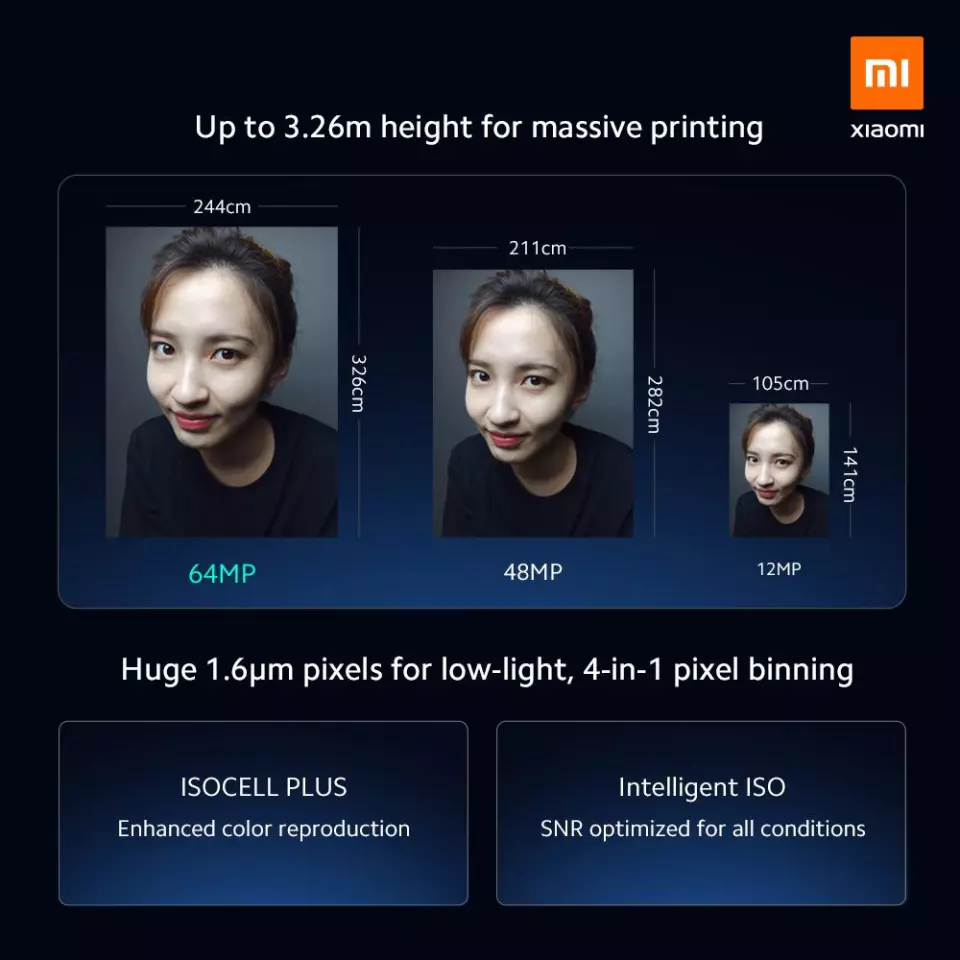Chinese phone manufacturer Xiaomi has reignited the megapixel race, long after most of us thought it was over. Along with a 64-megapixel flagship phone for its Redmi brand, the company announced it's preparing to debut a 100-megapixel phone camera designed in conjunction with Samsung.
Indeed, to be more precise, the upcoming machine will have 108 million pixels packed in, offering photos with 12,032 x 9,024-pixel resolution. For reference, generally if you see a photo printed on the side of a bus, it was probably taken with a 25-odd megapixel DSLR – maybe a 50-megapixel medium format camera.
Indeed, Xiaomi's own marketing materials say that the smaller 64-megapixel sensor is good for 3.26-meter-high (10.7-ft) prints. Going by this, you're probably going to need to get some higher walls.

So it's hard to say exactly what the benefits might be of rocking a 100-MP weapon in your pocket, if you're not taking giant landscape shots you wish to blow up and print for your wall. Which you probably wouldn't do on your smartphone anyway.
Indeed, it's easier to talk about what the drawbacks might be. First off: storage. Higher resolutions mean bigger photo files, and your phone memory will fill up faster. Secondly: processing. Shooting fast bursts will fill up buffers faster, and processing and saving each image will require more horsepower.
Then there's uploading. While the vast majority of smartphone shots never leave the camera, most that do are being uploaded to some third-party service like Instagram or Facebook, which routinely downsize your shots to fit their own criteria. Uploading a 100-MP image will give you no advantage here, and will chew extra bandwidth.
Finally, low light imaging may suffer, because smaller pixels suck in fewer photons each. This can potentially be sidestepped using pixel binning, which steps down the resolution by treating groups of four or more pixels as one, adding their outputs to pretend they're one larger pixel. It'll probably be fine.
Either way, it's coming. And with Samsung involved, it's unlikely to be restricted to Xiaomi's handsets. So clear yourselves some wall space, folks.
Source: Xiaomi (Twitter) via News18



